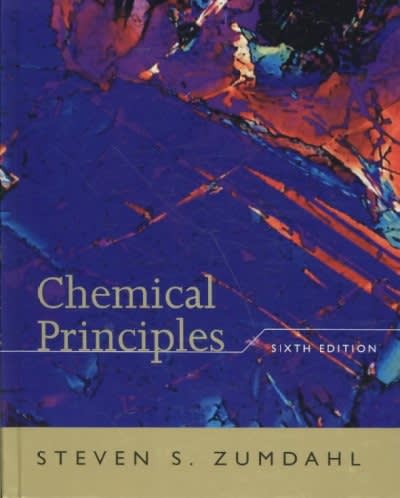The measurement of (mathrm{F}^{-})ion concentration by ionselective electrodes at (25.00^{circ} mathrm{C}) obeys the equation [mathscr{E}_{text {meas }}=mathscr{E}_{text
Question:
The measurement of \(\mathrm{F}^{-}\)ion concentration by ionselective electrodes at \(25.00^{\circ} \mathrm{C}\) obeys the equation
\[\mathscr{E}_{\text {meas }}=\mathscr{E}_{\text {ref }}-0.05916 \log \left[\mathrm{F}^{-}ight]\]
a. For a given solution, \(\mathscr{E}_{\text {meas }}\) is \(0.4462 \mathrm{~V}\). If \(\mathscr{E}_{\text {ref }}\) is \(0.2420 \mathrm{~V}\), what is the concentration of \(\mathrm{F}^{-}\)in the solution?
b. Hydroxide ion interferes with the measurement of \(\mathrm{F}^{-}\). Therefore, the response of a fluoride electrode is
\[\mathscr{E}_{\text {meas }}=\mathscr{E}_{\text {ref }}-0.05916 \log \left(\left[\mathrm{F}^{-}ight]+k\left[\mathrm{OH}^{-}ight]ight)\]
where \(k=1.00 \times 10^{1}\) and is called the selectivity factor for the electrode response. Calculate \(\left[\mathrm{F}^{-}ight]\)for the data in part a if the \(\mathrm{pH}\) is 9.00 . What is the percent error introduced in the \(\left[\mathrm{F}^{-}ight]\)if the hydroxide interference is ignored?
c. For the \(\left[\mathrm{F}^{-}ight]\)in part \(\mathrm{b}\), what is the maximum \(\mathrm{pH}\) such that \(\left[\mathrm{F}^{-}ight] / k\left[\mathrm{OH}^{-}ight]=50\).?
d. At low \(\mathrm{pH}, \mathrm{F}^{-}\)is mostly converted to HF. The fluoride electrode does not respond to HF. What is the minimum \(\mathrm{pH}\) at which \(99 \%\) of the fluoride is present as \(\mathrm{F}^{-}\)and only \(1 \%\) is present as HF?
e. Buffering agents are added to solutions containing fluoride before making measurements with a fluoride-selective electrode. Why?
Step by Step Answer:






